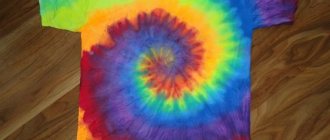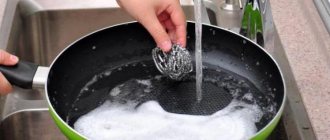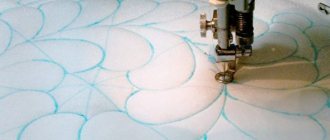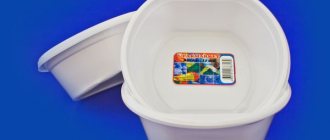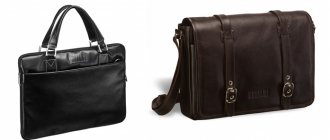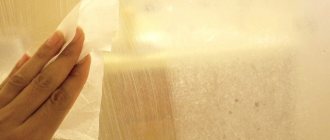Save and read later -
Music is not only the sound itself, but also the atmosphere around it. For example, vinyl: caring for a player and record collection is a whole ritual for many connoisseurs.
But above all, this is a necessity, because otherwise the records will deteriorate, sound bad, and the collection will look untidy. In this article we will tell you what a beginner vinyl lover needs to do.
Photo by soaringbird / CC-BY
The tips discussed below fall into the basic category. This means that they will be relevant for all vinyl lovers, and especially for beginners - regardless of whether you bought your first turntable or decided to revive an old device and listen to records from childhood. If you follow a few simple rules, your new equipment will last you longer, and old and rare recordings will not soon lose their charm.
Store records in special sleeves
After listening to the record, put it back in the envelope so that it doesn’t gather dust or you accidentally spill something on it. At the same time, if you often listen to a record, take it out and put it back and forth, then the original sleeve will sooner or later become unusable. In addition, regular paper sleeves can scratch the record. A scratched section of the record will sound distorted, and if the damage is severe, it may not play at all.
Photo heidl / Public Domain Mark 1.0
Envelopes are divided into outer and inner. External ones can be anything - as long as you like them. And the internal ones should protect the records from dust, scratches, and the accumulation of static electricity, so you shouldn’t choose just which ones. It is best to use plastic or polypropylene envelopes.
Ultrasonic cleaning
WEWU ROUNDS LP Vinyl Record Ultrasonic Cleaner
Like any other ultrasonic machine for washing vinyl records, this model consists of an ultrasonic bath and a special mount on which a record or several are placed.
In this case, we are talking about the ability to wash 5 records at the same time, and special silicone seals will protect the labels on the records from accidental drops. Amazon
CGOLDENWALL 6.5L 6-Records Ultrasonic Vinyl Record Cleaner
This model of ultrasonic machine is capable of washing up to 5 plates in one go.
It also provides protection from moisture on the “apples” of the records, as well as a wide adjustable temperature range - from 20 to 80 ºС. The icing on the cake is the function of drying the records after washing. Amazon
It's even more complicated here. In addition to a bath for the cleaning solution (and in this case you need several liters of it) with an ultrasonic emitter (the jewelry industry has it) and a bunch of devices for attaching the plate (but manufacturers make them specially), here the question of time arises: for the cleaning cycle of one The plate takes about 15 minutes of operation of the ultrasonic emitter. It also takes time to first secure the plate, and then dry it and remove it from the mounts. But the result, according to many vinyl collectors, sounds fantastic. Well, let's take their word for it.
By the way, to make the surface of a record perfectly clean, you don’t always need to water it with something. It is often much easier to remove dust particles from the grooves with special rollers made of sticky material. This is very similar to the well-known IKEA rollers for removing lint and pet hair from clothes, only the roller itself is not covered with layers of sticky paper, but is cast from a special material.
This material is sticky and soft enough to penetrate deep into the grooves of the record and collect all the dust from there without damaging the grooves themselves. A few careful movements and the vinyl is clean. This may not be the most ideal method described, but it is definitely the fastest.
Away from sun, heat and moisture
It is unlikely that you will be able to allocate a separate room for storing records and monitor its microclimate, but you still need to follow simple conditions.
Place records away from radiators, heaters and other heat sources. These sources can be the most unobvious - for example, cats. Brittany McCrigler told the story of how her cat took a nap on the record, leaving his mark on it. Fortunately, the record was restored with the help of two plates and an oven.
To prevent fungi and mold from growing on envelopes, avoid damp places. We understand that you are not going to put a cabinet with records in the bathroom, but you shouldn’t store them, say, in a wooden house or in a garage. Finally, your collection should not be exposed to direct sunlight to prevent the roots from fading.
How to care for vinyl: 7 tips for beginners
Music is not only the sound itself, but also the atmosphere around it. For example, vinyl: caring for a player and record collection is a whole ritual for many connoisseurs. But above all, this is a necessity, because otherwise the records will deteriorate, sound bad, and the collection will look untidy. In this article we will tell you what a beginner vinyl lover needs to do.
Photo by soaringbird / CC-BY
The tips discussed below fall into the basic category. This means that they will be relevant for all vinyl lovers, and especially for beginners - regardless of whether you bought your first turntable or decided to revive an old device and listen to records from childhood. If you follow a few simple rules, your new equipment will last you longer, and old and rare recordings will not soon lose their charm.
Do not touch the surface of the record
No matter how neat you are, picking up a record straight from the soundtrack is a bad idea. Grease, dirt and sweat from your fingers will get into the grooves and the record will sound worse. You can only pick up the record by the edges and the label.
Store records in special sleeves
After listening to the record, put it back in the envelope so that it doesn’t gather dust or you accidentally spill something on it. At the same time, if you often listen to a record, take it out and put it back and forth, then the original sleeve will sooner or later become unusable. In addition, regular paper sleeves can scratch the record. A scratched section of the record will sound distorted, and if the damage is severe, it may not play at all.
Photo heidl/Public Domain Mark 1.0
Envelopes are divided into external and internal. External ones can be anything - as long as you like them. And the internal ones should protect the records from dust, scratches, and the accumulation of static electricity, so you shouldn’t choose just which ones. It is best to use plastic or polypropylene envelopes.
Stack records vertically in a row, not horizontally in a stack
If you place records on top of each other, the bottom ones will bend over time. Round spots will appear on the envelopes because they are pressed tightly together. Therefore, the collection should be stored in an upright position and the cabinet should not be filled to the brim with records.
Photo by Cinty Ionescu / CC BY 2.0
Away from sun, heat and moisture
It is unlikely that you will be able to allocate a separate room for storing records and monitor its microclimate, but you still need to follow simple conditions.
Place records away from radiators, heaters and other heat sources. These sources can be the most unobvious - for example, cats. Brittany McCrigler told the story of how her cat took a nap on the record, leaving his mark on it. Fortunately, the record was restored with the help of two plates and an oven.
To prevent fungi and mold from growing on envelopes, avoid damp places. We understand that you are not going to put a cabinet with records in the bathroom, but you shouldn’t store them, say, in a wooden house or in a garage. Finally, your collection should not be exposed to direct sunlight to prevent the roots from fading.
Don't experiment with cleaning products
Homemade alcohol compounds, glue and even dishwashing detergent - there are a lot of tips on how to clean records.
But amateur activity is at your own peril and risk. There are many nuances here, and there is always a chance of damaging the record by selecting a cleaning composition from the arsenal of household chemicals. To simply clean the surface from dust, distilled water will also work. For more thorough cleaning, it is better to use certified products.
How to clean records
A budget option is microfiber cloths.
They can easily remove simple contaminants: dust on the surface, dirt and grease from your fingers. On the other hand, microfiber particles can become clogged in the sound grooves. To clean the record more thoroughly and, most importantly, without consequences, you need to use special brushes. The most advanced option is a vinyl cleaning machine. It, in combination with a cleaning liquid, gives the best result, completely removing dirt from the records.
Don't forget about the player itself
The record player also needs care.
The fact that you need to wipe it from dust goes without saying. Also pay attention to the needle: if it is in poor condition, the records will deteriorate - particles of dirt from the needle will be pressed into the grooves on the record, and it will be very difficult to get them out of there. The most budget option is to clean the needle with a cotton swab. Soak it in the solution you use to clean records and run over the surface of the stylus. This, however, risks the fact that cotton particles may get caught on the needle - in which case cleaning will do more harm than good. You can use sticky vinyl sponges - they are suitable for both records and the stylus. Ideally, you should clean the stylus after each listening session.
When the player is running, make sure that no one touches it. Then the needle may jump off and damage the record. Craftsmen also save vinyl from scratches, but this is quite difficult to do. You'll have to use a scalpel to correct the scratch under a microscope. And it’s not a fact that it will work out.
It is also important to monitor how level your turntable is installed.
This will help avoid unnecessary vibrations, which, in turn, affect both the sound quality and the operation of the entire system as a whole. After you have placed the player on a stable surface away from external sources of vibration, you need to level it so that all components of the player are positioned strictly horizontally and not at an angle. You can level it using a compact level or even a smartphone application - these can be downloaded to any model with a built-in gyroscope.
It is worth paying attention to the installation of the cartridge - it also needs to be leveled (for this there are special metal measuring rulers and simpler cardboard ones - manufacturers include them in the kit). This operation ensures that the stylus will be located at the desired angle to the groove of the record - which will extend the life of both the record and the player. We talked about this in more detail here.
Even more tricks and tips in our “Hi-Fi World”:
- How to clean the stylus and records, how to properly install the turntable and other vinyl guide tools: part 1 and part 2
- Care and storage of vinyl records
- Vinyl Tricks
How to clean records
A budget option is microfiber cloths. They can easily remove simple contaminants: dust on the surface, dirt and grease from your fingers. On the other hand, microfiber particles can become clogged in the sound grooves. To clean the record more thoroughly and, most importantly, without consequences, you need to use special brushes.
The most advanced option is a vinyl cleaning machine. It, in combination with a cleaning liquid, gives the best result, completely removing dirt from the records.
Vinyl washing
Studebaker Vinyl Record Cleaning System
The Studebaker kit is a cross between brush and spray kits and real vinyl record washing machines.
In addition to brushes and rags, the buyer will also receive a bath for the cleaning solution, rotating rollers adjustable to any size of plates, and a chemical concentrate for preparing the cleaning solution. Amazon
Knox Vinyl Record Cleaner Spin Kit
The solution from Knox is very similar to what its competitors offer, but there is an important nuance - a complete record dryer.
No, this is not a hair dryer or similar device, it is just a convenient stand with a bunch of pins between which the records are placed vertically until they dry. But this stand exists and it perfectly solves the drying problem. Amazon
Record Washer System by Spin-Clean
Another similar kit for washing vinyl at home.
The manufacturer focused on a bright design and a patented composition of the concentrate for diluting the solution. It will appeal to those who, all other things being equal, prefer a catchy design and bright colors. But the manufacturer didn’t think about the dryer. Amazon
Spin-Clean Record Washer MKII Limited-Edition Kit, “Clear” (45th Anniversary)
The combination “Limited-Edition” in the name of this kit is not just that: the manufacturer has added a lot of additional units to its composition, such as a whole extra liter of washing liquid, additional brushes and cloths, as well as a completely transparent design of the container for records.
The ability to see what happens to a record immersed in washing liquid is a very convenient option, no matter how you look at it. Amazon
The most “wild” way is soapy water at home. I can’t say that this method is recommended, but with due care, damaging vinyl with water requires a lot of effort. But this method also has obvious disadvantages in the form of inconvenience and length of the process. Plus, the records need to be dried somewhere, and this is an additional difficulty.
It is much more convenient to use a special solution. It is produced by many companies, but some of them show some concern for users, completing the bottle with the solution with additional “goodies”. For example, a special cloth that cannot harm the grooves of the record, and a round rubber pad on the label area. Very convenient: put the record on the player, cover the label with a protective cover, spray a little solution on the surface and wipe it with the included cloth. And at the same time quickly, which is also important.
The next level is special devices for washing vinyl at home. Usually this is some kind of container for a washing solution with vertical loading of the plate, special protection from liquid on both labels, and fasteners that hold the plate at the desired immersion level and allow it to be rotated. This differs from the option with soapy water in greater manufacturability, but the time spent on washing each record is still off scale.




